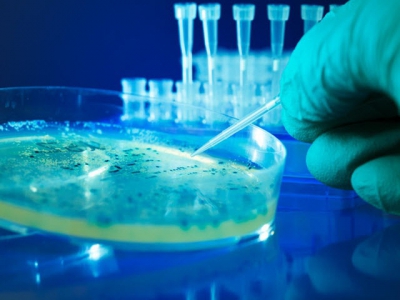Salmonella challenge prompts three-prong, feed-based approach

In an effort to help poultry producers address the challenge presented by salmonella, Arm and Hammer has designed a multi-prong feed additive program, says research director.
The New Jersey-based animal nutrition and health company highlighted some of the risks that salmonella presents for the poultry industry at IPPE last month. The company also talked us to about a program using a series of feed additives it has developed that is aimed at addressing the disease in poultry.
As part of the its ongoing effort to address the disease pre-harvest, or during animal growth and development, Arm and Hammer Animal and Food Production created its Certillus SAL program using a blend of technologies.
Jackson McReynolds, director of R&D at that company, told us: “Certillus Sal is a pre-harvest [program] that will be [provided] through the feed. We’re preparing to bring it to market to ameliorate some of the problems that we’re seeing in both chickens and turkeys.”
The blended feed additive system is intended to reduce the presence of salmonella both within birds and their environment, he said. It involves a three-pronged approach to address the bacteria including by binding salmonella when it is present, providing Bacillus strains selected to control the bacteria and improving litter quality and moisture.
The blended technologies include refined functional carbohydrates to support a bird’s immune system and bind to some salmonella prevent it from attaching to cell walls, said McReynolds.
The approach also involves the selection of Bacillus strains to target specific salmonella, he said. “These Bacillus have some really unique features about them,” he added.
The company is also generating an enzyme from Bacillus strains to address litter moisture, said McReynolds.
When looking at production environment for poultry one concern can be wet litter, which can have several causes, he said. “If we can keep those water levels low, we can reduce salmonella."
Salmonella outbreaks in the US
Lisa Picard, senior VP for scientific and regulatory affairs with the US National Turkey Federation, spoke during the Arm & Hammer breakfast event, held during the trade show. She outlined how 2018 was challenging, with 906 cases of salmonellosis in humans in the US linked to meat and poultry products from several specific serotypes.
However, she noted that new technologies and greater consumer awareness means outbreaks are being caught sooner and reported in more rapid fashion.
“Salmonella is a living organism, so it also evolves," she stressed.
New technology, like the use of whole-genome sequencing, is changing how foodborne illnesses are categorized, said Picard.
“We’re really in a dynamic period of change as to how food safety and foodborne illness is recognized, and regulated and is hopefully prevented,” she added.
Efforts to address diseases like salmonella need to continue adapting and stakeholders at all parts of the value chain need to work collaboratively, she said. “Food safety requires a coordinated approach between the farmer, producer and consumer."
There are producers who spend $300,000 a year on in-feed additives to address salmonella in the poultry gut, she said. However, there is no guarantee every product will work all the time.
“Where it gets dicey are in these specific subtypes of salmonella, which affect different people and different animals at different times.
“There are thousands of types of salmonella, the same types that make a human sick don’t make a turkey sick – that would be far too easy – and the same type that makes a turkey sick today is not necessarily what makes them sick tomorrow – that’s why it isn’t easy.”
“We’re going to continue to seek answers [because] salmonella is not going to go away any time soon,” she said.
Related news
 Can pre-natal nutrition program the gut microflora in birds?
Can pre-natal nutrition program the gut microflora in birds? The basic concept of in-ovo feeding is to supplement the amniotic fluid, which is the first meal of a chick before it hatches, in order to provide nutritional
 Seaweed is for the birds, and producers interested in ABF production
Seaweed is for the birds, and producers interested in ABF production Ocean Harvest Technology is looking to boost the use of seaweed-based feed additives to support producers interested in curbing or cutting the use of antibiotic
 Single avian flu viral protein can increase period of infectivity
Single avian flu viral protein can increase period of infectivity Accessory protein in avian influenza viruses able to shut down chicken immune response and increase length of time virus can be transmitted.